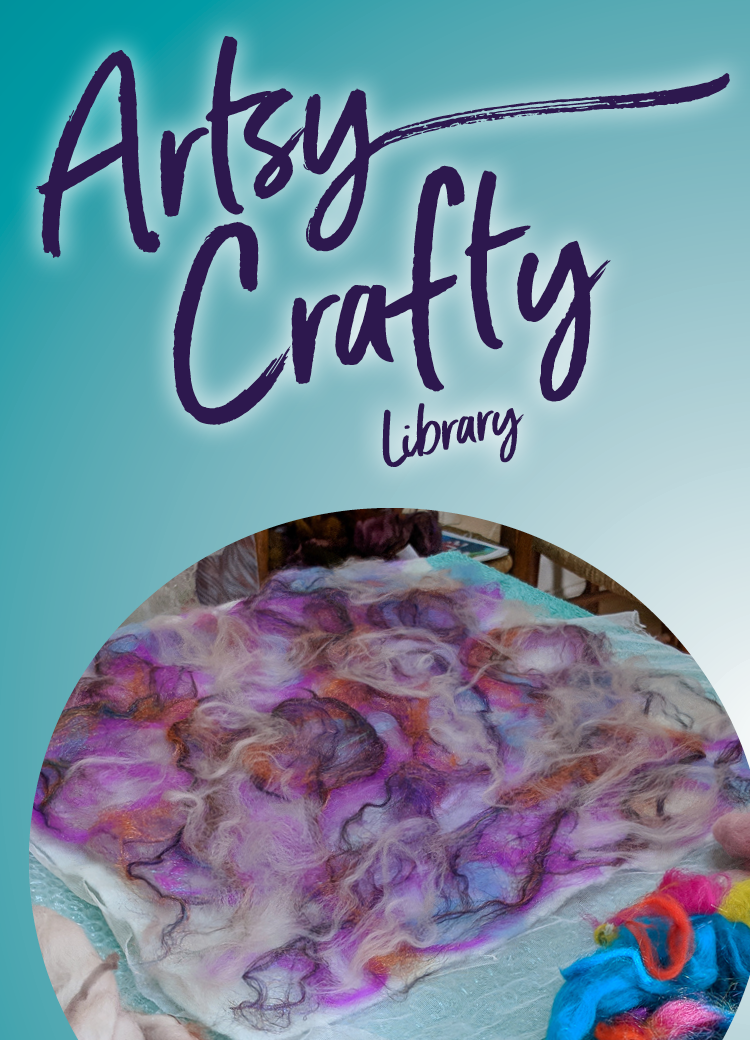Artsy Crafty Library: Learning to felt
content
Felting is the earliest known process for creating fabric, predating any kind of spinning or weaving. Felt is created when wool fibers mesh together. This can be the result of applying friction, heat and/or water.
Wet Felting
Welt felting is the most traditional type of felting. The process involves layering wool roving (unspun wool), wetting it with warm soapy water and applying friction to mesh the layers together. You can then use the fabric to make garments, home furnishings, hats, scarves, purses, mittens, slippers and more.
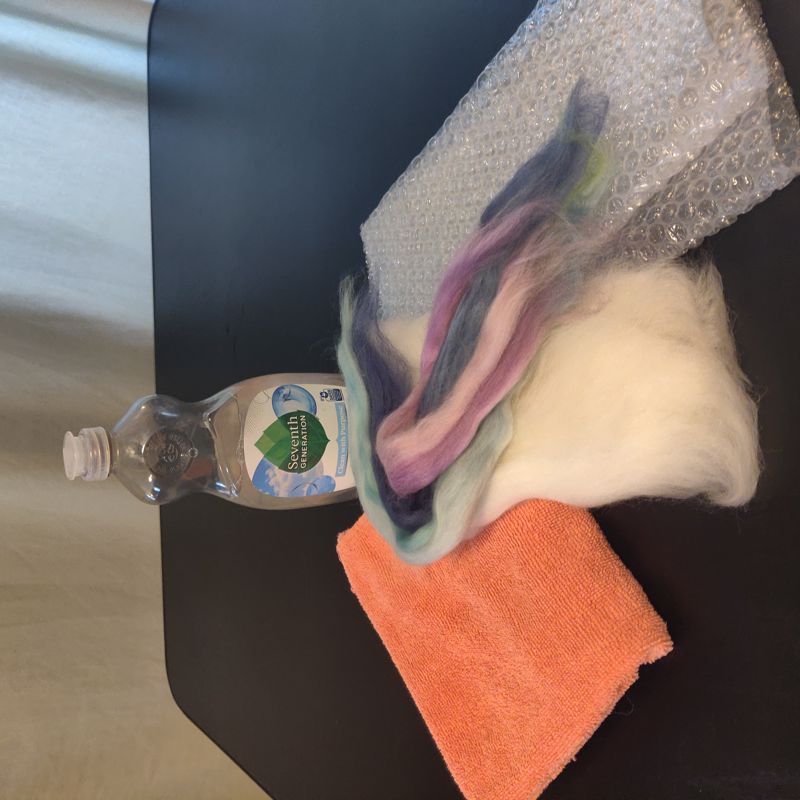 To wet felt you will need wool roving, bubble wrap, soap and water and a towel.
To wet felt you will need wool roving, bubble wrap, soap and water and a towel.
Layering
Place a piece of bubble wrap on your work surface and lay tufts of roving flat and in the same directions on the surface of the bubble wrap allowing the tufts to overlap with one another.
Create a second layer of roving by placing these tufts perpendicular to your first layer. Continue the layering process until your roving is about 3 inches thick. You can also experiment with your top design to create a picture with your contrasting colors.
Add soap & rub
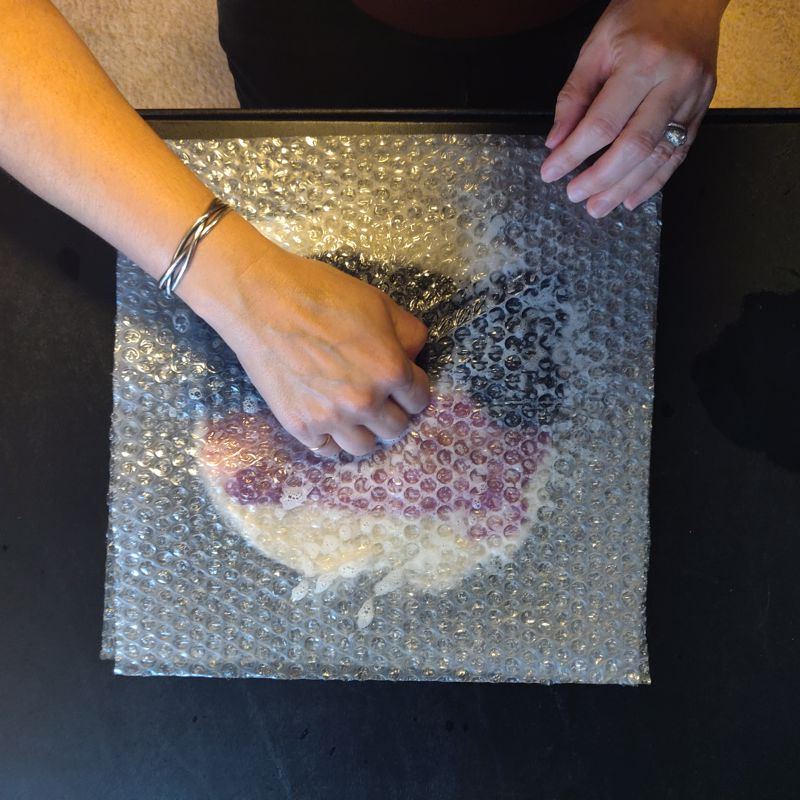 Next, you’ll want to thoroughly soak your roving with soapy water being careful to not disturb your design. Place your second sheet of bubble wrap, bubble side down, on top of your roving and sprinkle a small amount of soapy solution to the top of your bubble wrap.
Next, you’ll want to thoroughly soak your roving with soapy water being careful to not disturb your design. Place your second sheet of bubble wrap, bubble side down, on top of your roving and sprinkle a small amount of soapy solution to the top of your bubble wrap.
Gently rub the bubble wrap in a back and forth or circular motion. After five or 10 minutes remove the top layer to see if felt has formed. You’ll know felt has formed if you are unable to pull up the fibers when pinching the piece. Turn the felt in progress face down, place the top bubble wrap back on the work and continue rubbing until the bottom of the work is felted as well.
Once the piece is completely felted thoroughly rinse the felt free of the soap and wrap in your towel to absorb as much water as possible.
Second rub & lots of rinsing
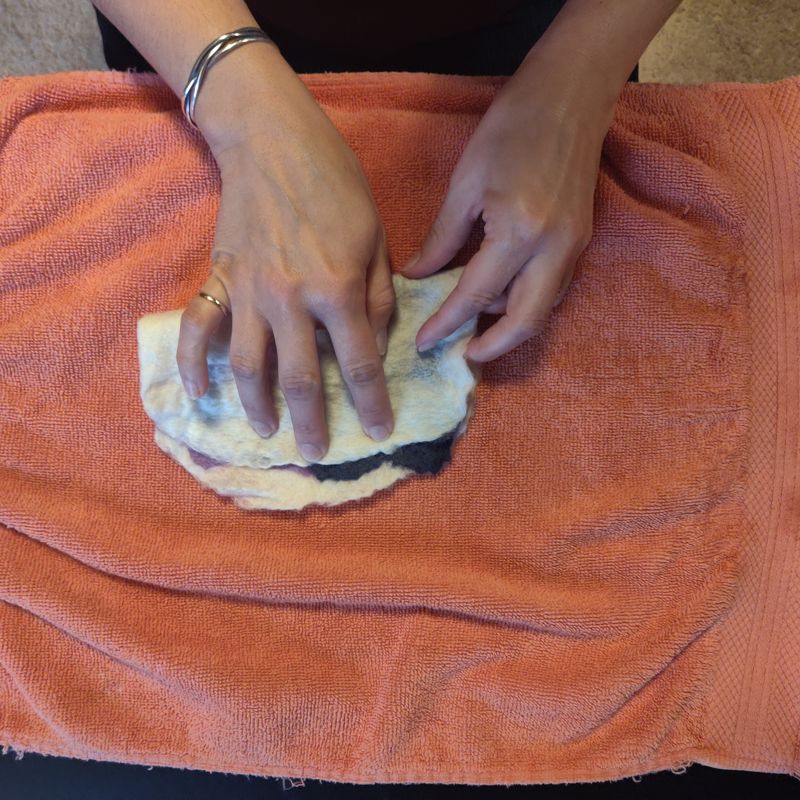 Fold your piece in half and rub the surfaces together making sure to rub front side to front side and back side to back side. This will help shrink and tighten the felt. Now rinse several times (probably more than you think) in cold water to get the soap out. Finally, allow your felt to air dry.
Fold your piece in half and rub the surfaces together making sure to rub front side to front side and back side to back side. This will help shrink and tighten the felt. Now rinse several times (probably more than you think) in cold water to get the soap out. Finally, allow your felt to air dry.
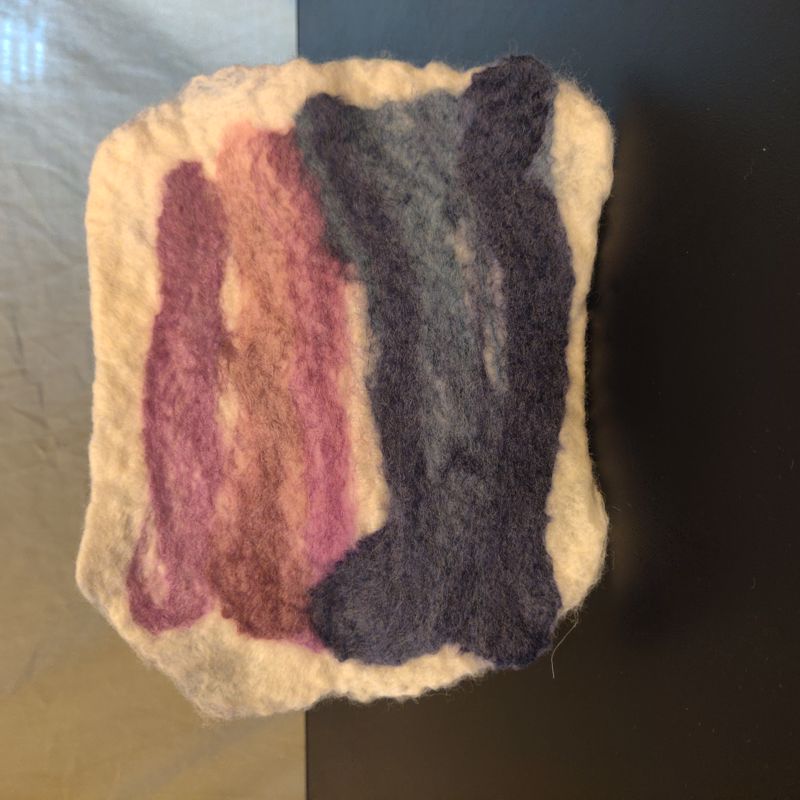 Congratulations, you’ve learned to wet felt! Now you can take this technique and make all sorts of wonderful creations.
Congratulations, you’ve learned to wet felt! Now you can take this technique and make all sorts of wonderful creations.
More resources & ideas
Explore felting more with the our Learn Wet Felting Kit, books and Creativebug videos.












